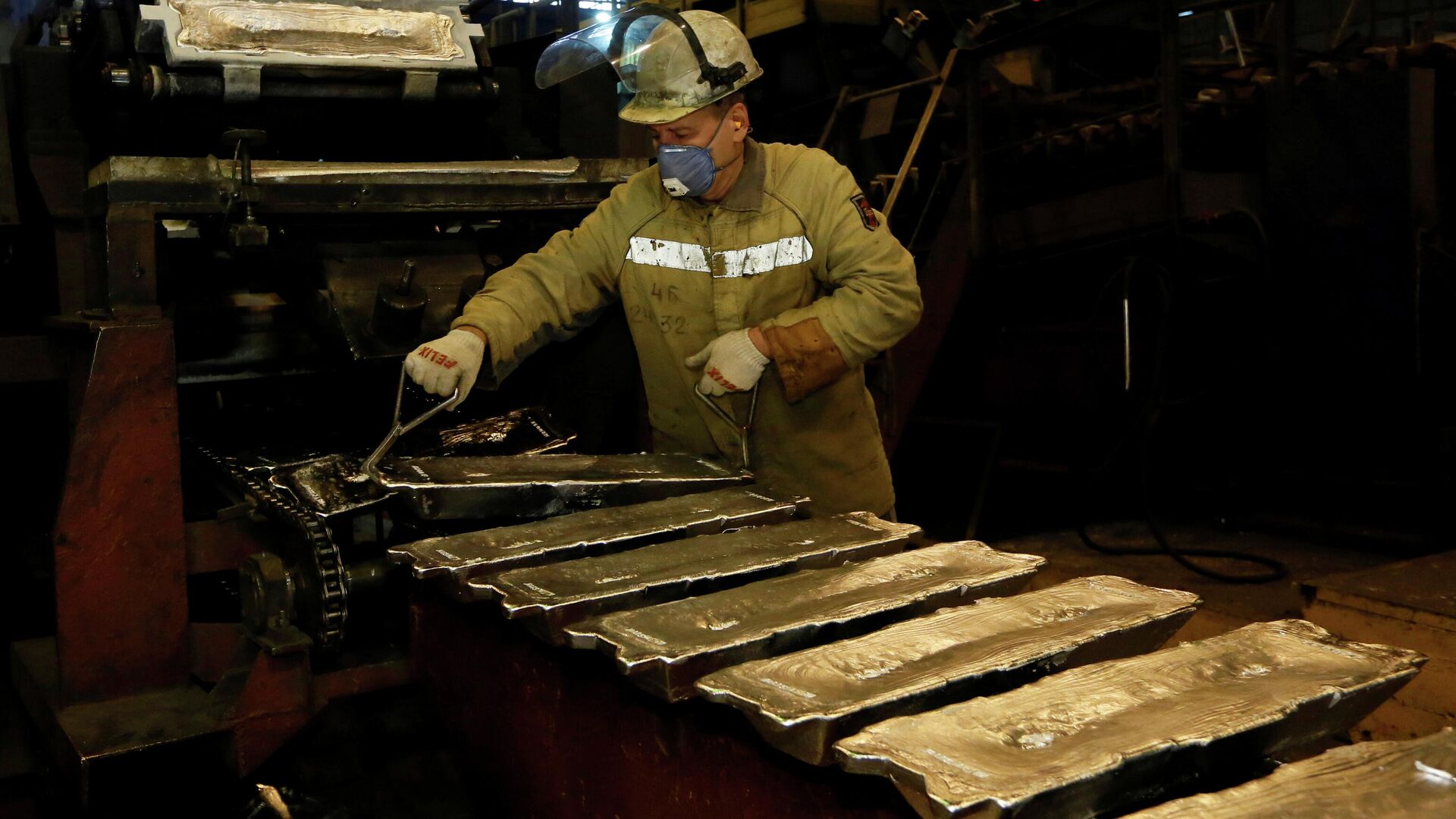https://sputnikglobe.com/20211101/400c-resistant-aluminium-alloy-created-in-russia-1090382225.html
400°C Resistant Aluminium Alloy Created in Russia
400°C Resistant Aluminium Alloy Created in Russia
Sputnik International
Researchers from the National University of Science and Technology “MISiS” (NUST MISIS) together with fellow Russian scientists have created an inexpensive... 01.11.2021, Sputnik International
2021-11-01T08:42+0000
2021-11-01T08:42+0000
2021-11-01T08:42+0000
science & tech
russia
scientists
aluminium
https://cdn1.img.sputnikglobe.com/img/07e5/0b/01/1090382155_0:156:3087:1892_1920x0_80_0_0_90757c16d59b4c2437f5259554ed5ddd.jpg
The scientists responsible for the creation claim that the material would significantly reduce the weight and carbon footprint of new rail vehicles, aircraft and other machinery. Their study has been published in the Journal of Alloys and Compounds.Aluminium and most aluminium-based alloys are highly resistant to corrosion in almost all environments: the atmosphere, seawater, freshwater, many chemical solutions and most foodstuffs. Given these properties, as well as its low specific gravity and good thermal and electrical conductivity, aluminium is widely used in aircraft, automotive, electronics and other industries.Aluminium alloy wire could be an effective substitute for the expensive and heavy copper-based conductors used today, the scientists said. Its use in aircraft, high-speed rail vehicles and other equipment would reduce their weight and size characteristics, thereby ensuring significant fuel savings and reducing harmful emissions into the atmosphere. However, the methods of producing such alloys and their element base are extremely expensive and labour-intensive today, NUST MISIS reported.University specialists have proposed the structure of a new aluminium-based alloy, as well as the technology to produce wire from it. According to the creators, the material differs from its counterparts due to its relatively low cost, ease of production and several unique physical properties.According to the authors of the research, one of the key features of the new alloy is that about 10% of its volume is comprised of special nanoparticles containing zirconium and manganese, which are evenly dispersed in the aluminium matrix.The alloy was manufactured with an electromagnetic crystalliser using the ElmaCast technology developed at RPC Magnetic Hydrodynamics (Krasnoyarsk). Subsequent deformation-heat treatment and analytical studies were carried out with the participation of specialists from the NRC “Kurchatov Institute”.In the future, the scientific team plans to continue working on optimising the chemical composition of the new material and its processing.
russia
Sputnik International
feedback@sputniknews.com
+74956456601
MIA „Rossiya Segodnya“
2021
Sputnik International
feedback@sputniknews.com
+74956456601
MIA „Rossiya Segodnya“
News
en_EN
Sputnik International
feedback@sputniknews.com
+74956456601
MIA „Rossiya Segodnya“
Sputnik International
feedback@sputniknews.com
+74956456601
MIA „Rossiya Segodnya“
science & tech, russia, scientists, aluminium
science & tech, russia, scientists, aluminium
400°C Resistant Aluminium Alloy Created in Russia
Researchers from the National University of Science and Technology “MISiS” (NUST MISIS) together with fellow Russian scientists have created an inexpensive aluminium alloy that can withstand temperatures 100-150°C higher than its analogues.
The scientists responsible for the creation claim that the material would significantly reduce the weight and carbon footprint of new rail vehicles, aircraft and other machinery. Their study has been published in the
Journal of Alloys and Compounds.
Aluminium and most aluminium-based alloys are highly resistant to corrosion in almost all environments: the atmosphere, seawater, freshwater, many chemical solutions and most foodstuffs. Given these properties, as well as its low specific gravity and good thermal and electrical conductivity, aluminium is widely used in aircraft, automotive, electronics and other industries.
Aluminium alloy wire could be an effective substitute for the expensive and heavy copper-based conductors used today, the scientists said. Its use in aircraft, high-speed rail vehicles and other equipment would reduce their weight and size characteristics, thereby ensuring significant fuel savings and reducing harmful emissions into the atmosphere. However, the methods of producing such alloys and their element base are extremely expensive and labour-intensive today, NUST MISIS reported.
University specialists have proposed the structure of a new aluminium-based alloy, as well as the technology to produce wire from it. According to the creators, the material differs from its counterparts due to its relatively low cost, ease of production and several unique physical properties.
“Our material has a thermally stable structure and can withstand temperatures up to 400°C. All known aluminium alloys experience significant softening already at 250-300°C. Our alloy includes copper (Cu), manganese (Mn) and zirconium (Zr), which gives a unique combination of electrical conductivity, strength and heat resistance”, Torgom Akopyan, senior researcher at NUST MISIS Department of Metal Forming, noted.
According to the authors of the research, one of the key features of the new alloy is that about 10% of its volume is comprised of special nanoparticles containing zirconium and manganese, which are evenly dispersed in the aluminium matrix.
The alloy was manufactured with an electromagnetic crystalliser using the ElmaCast technology developed at RPC Magnetic Hydrodynamics (Krasnoyarsk). Subsequent deformation-heat treatment and analytical studies were carried out with the participation of specialists from the NRC “Kurchatov Institute”.
In the future, the scientific team plans to continue working on optimising the chemical composition of the new material and its processing.

